Text
Hyde Park: The Center of the World?

Did you know that our neighbor Franklin Delano Roosevelt was the man who came up with the idea for the United Nations? He had been bothered by his country’s failure to join the League of Nations just after WWI. So, to insure America’s place in world politics, he decided that during the Second World War, the allied powers should come together to create some sort of world collective security organization. He was so sure of its importance that at one point he even contemplated leaving the Presidency so that he could oversee the U.N. as its first Secretary General. Of course we know that would never happen, in fact he would never get the chance to see his victory in the war or the creation of the U.N. but it's interesting to wonder how he might have felt to know that his hometown was in the running to be the Capital City of the United Nations.
In November of 1945, Benson R. Frost, an attorney from Rhinebeck and FDR’s friend, was appointed to represent the Hyde Park United Nations Organization Committee. It was his job to argue on behalf of the Town of Hyde Park, that there was no better place to house such an important and international concern. The pamphlets that were produced layout all of the reasons why Hyde Park would make such a perfect location for all of the world’s nations to converge. Beginning with the fact that the Home of FDR was used as a temporary White House whenever he visited the town. That requires easy access, security, and communication abilities. Frost and his team made sure to add the fact that most of the leaders of the allied nations had already spent much time in Hyde Park when they would visit the President, so they were already familiar with its layout and commodities.
The pamphlets also included the fact that there was plenty of land for the taking, owned both privately and by the Federal Government. It made it seem as if the estates surrounding the Home of FDR could easily make for excellent headquarters for the U.N. offices (could you imagine Vanderbilt Mansion being an office building?!). Though it should be noted that not all estate owners wanted to just hand over their lands to the U.N., including Mrs. Gerald Morgan who lived at Bellefield. But she would consider negotiating with the U.N. for its sale to the organization on a “reasonable basis.” There was also talk of installing a reservoir near the “dream house” (that’s a code word for Top Cottage in Press talk) that could be fed from the Fallkill and Crum Elbow creeks.

Of course the committee could not forget to include the fact that Hyde Park is right in the middle of the lovely Hudson Valley that has easy access to all sorts of colleges, industries, hospitals and sightseeing opportunities (none of these things were actually located in Hyde Park, but not far.) For example, the two major colleges of Vassar and Bard were mentioned and the big local factories of Poughkeepsie were discussed including IBM, DeLaval Separator, and Schatz Bearings. The fact that the closest major airport was in Newburgh was not a concern, as there was talk of adding a 6,000 foot runway for planes somewhere in town and that this particular part of the Hudson River “is suitable for landing seaplanes.”

With all of these things to consider, in February of 1946, the official UNO Committee decided that Hyde Park was not suitable for building a city needed for the Capital of the World. They claimed that the town is “apt to be rather hot in summer and the area does nor lend itself very easily to the building of a city inasmuch as there is only one strip of land which lends itself to city planning.” The committee even said that “the close association of the area with President Roosevelt is greatly welcomed in certain American quarters and arouses just as strong an opposition in others.” (true, not everybody liked him.)
So, Hyde Park lost the chance to be the center of the world. Though honestly, New York City gets just as hot as we do during the summer! Though it might be for the best, could you imagine the traffic jams on Route 9??
2 notes
·
View notes
Text
Fireside Chats - at St. James Chapel
I am excited and honored to be invited to speak at the famous Fireside Chats at St. James Chapel. Tomorrow night (Thursday the 16th, at 7pm) is the first of four lectures and I will be discussing my research on the Delano Family and the opium trade. Not many people are aware of the fact that Franklin Delano Roosevelt was just as much a Delano as he was a Roosevelt. His mother would claim that he was a Delano first and a Roosevelt second and he seemed to agree with her.

The Delano family came to the colonies on the second ship to arrive in Plymouth, The Fortune, which would set the tone for the rest of the family’s history. They became merchant sailors and made their way to China by the 1830s. The opium business was not the most legal way to make one’s wealth but considering that many of the fortunes made by 19th century Americans involved the exploitation of others, this should come as no surprise.

During tomorrow night’s lecture, I will discuss the movement of opium, tea, silks, and the wars that the Delanos found themselves in the middle of. We will also look at what the Delano family would do with their wealth, Hyde Park certainly benefitted from Sara Delano Roosevelt’s money. Our library was built with her money, St. James Church itself prospered with her money.
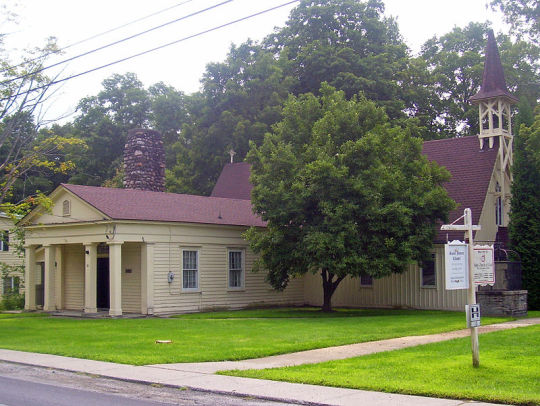
Join me at St. James Chapel on East Market Street at 7PM!
4 notes
·
View notes
Text
A Visit to the Executive Mansion
I have been researching various places where our neighbor and commander-in-chief Franklin Delano Roosevelt once called home. Today I was able to get a private tour at the Executive Mansion in Albany where FDR lived while serving as our Governor. True, this is not really about Hyde Park. But it was pretty cool to see where our guy from Hyde Park spent some time.

The Executive Mansion started out as the private residence of Albany banker Thomas Olcott who built the Italianate house in 1856. It didn’t become the residence of a governor until it was rented in 1875 by Governor Samuel Tilden for a pricey $9,000 a year. Two years later, the state acquired the mansion for about $45,000 to serve as the permanent residence for New York State Governors. The mansion included greenhouses that were redone by Governor Charles S. Whitman during his administration from 1915-1919.

Governor Al Smith was a great lover of animals and he had a petting zoo added to the grounds during his time in office. But it was actually Governor Smith who suggested that one of the greenhouses (and there were 3 of them) be turned into a therapy pool for FDR. This is believed to be part of his way of convincing FDR to leave Warm Springs GA and reenter public service by running for Governor. It worked! The idea of having a place to swim in warm waters while working on speeches and talking with journalists managed to get FDR to run a very successful race for Governor. FDR announced his plans for the construction of the pool while at his home in Hyde Park on December 16th, 1928. He argued that it was costing the state $6000 a year to operate the greenhouses, that only managed to produce flowers worth some $750. Though the pool was not completed until 1929, FDR certainly took advantage of it during his time in office and his race to the Presidency.


Here we can see the greenhouse where FDR did his swimming. It stands just behind the mansion. In the background, you can see the New York State Museum and other state buildings. During the Nelson A. Rockefeller era, the pool was filled in and returned to its greenhouse use while a new outdoor pool and tennis court were added. In 1988 Governor Mario Cuomo had the pool restored back to just as FDR had it.
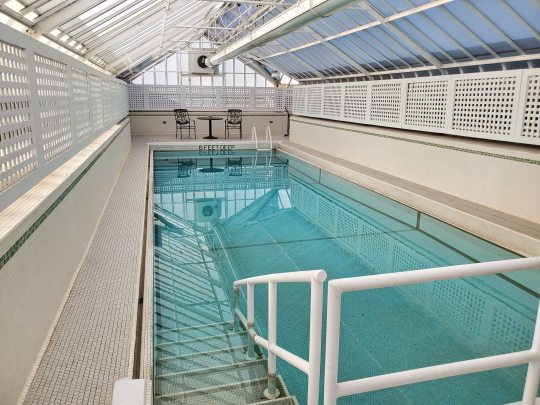
It was a pleasure to get to see this up close and personal. I could absolutely picture FDR swimming laps here while dictating a speech to Missy Lehand. Another part of the house was the drawing-room where FDR and many Governors were sworn in. Though the mansion suffered a fire during the Rockefeller era, it was restored back to its original look right down to the plaster moldings, mostly out of Rockefeller’s own pocket.


Another interesting addition to the mansion is an electric elevator which dates back to Roosevelt’s time and still works today! There is also a wheelchair on display that is believed to be one of the first wheelchairs FDR used and was donated to the Mansion’s collection by Anna Roosevelt. One other cool piece they showed me was an ashtray that FDR used when he lived here that can be seen in a few historic photographs.

I have to thank the staff at the Executive Mansion including our excellent tour guide Stuart Lehman who knows just about everything! They were so gracious and welcoming!
4 notes
·
View notes
Text
The Dominican Summer Camp

If you are driving along Route 9 just between Hyde Park and Staatsburgh you come across an 18th-century house known as the Rymph house. This was originally the home of George Rymph and was built in the 1760s. But there is no one left alive who would remember those days. There are, however, many who live here in Hyde Park who might remember going to camp at this same location when it was known as the Dominican Boys’ Camp.

The Last of the Rymphs to own the house was Estelle Rymph, who sold the house to Rev. Raymond Meagher in 1914 for $17,000. He had planned some sort of educational facility but never managed to make it happen. Later, he handed the property over to Rev. William Leo Whalen O.P. who began the process of turning the site into a camp in the 1920s. On the 50 acre parcel along the Hudson, Fr. Whalen brought in his sister Edna and brother-in-law Fred Kirby to help him with the project. They lived in the Rymph house together and started building the camp in 1927.
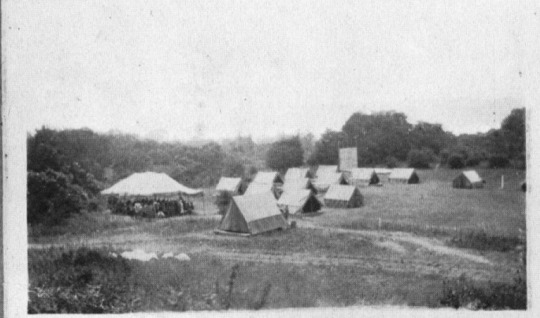
In the early days of the camp, there were tents “and the rates were only $10 weekly” but by the early 1930s construction started on huts. In 1931 there were 251 boys and 167 girls at the site (apparently the camp became an all-boys camp by the 1950s). Electricity came to Rosary Point that year as well. A Dominican priest visited the camp in the early 30s to write about its daily happenings and conditions and he was quite happy with what he saw…

“The daily routine begins at seven each morning. With the blowing of a bugle, all arise and, after sufficient time has been given for dressing, a second signal is given for all to line up outside their tents. A procession is then formed and the campers march across the campus to the out-door altar for Mass. As soon as Mass is over the boys return to the drill ground for their morning setting-up exercises. At eight o'clock the call to breakfast is sounded and all array themselves about the tables for the morning repast. As soon as breakfast is finished time is allotted for arranging the tents and all must have their equipment ready for inspection at nine.”
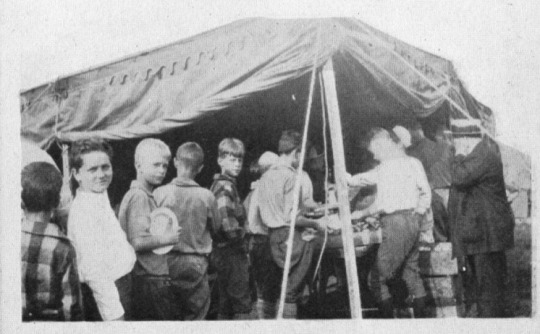
He also went on to talk about the kitchen and food. The meals were prepared at the Rymph house in the early days by Edna Kirby with the help of some of the campers. They even received food from the local farms in Hyde Park...
“The kitchen, a vital part of every camp, is large and commodious and is under the supervision of experienced cooks. No efforts are spared to secure and serve wholesome and nutritious food in ample quantities. From neighboring farms are procured the vegetables, butter, milk and other farm products for the camp table, and it is the proud boast of those in charge that the cuisine of the Dominican Camp is unsurpassed.”

In 1936 a pool was built and there was an outdoor altar for morning mass. The St. Dominic’s Chapel was dedicated in 1959 in honor of the camp’s founder, Fr. Whalen, and this is the only building still standing from the camp’s construction. Based on some of the memories that I have stumbled onto, the camp was a wonderful place to grow up. Swimming, baseball, basketball, archery, and music where just some of the activities that were enjoyed. By the 1960s the camp had over 250 acres and there were dormitories with hot water. The rates for summer (8 weeks) were $350 per boy. The camp was successful for nearly 75 years and closed in the mid-1980s.

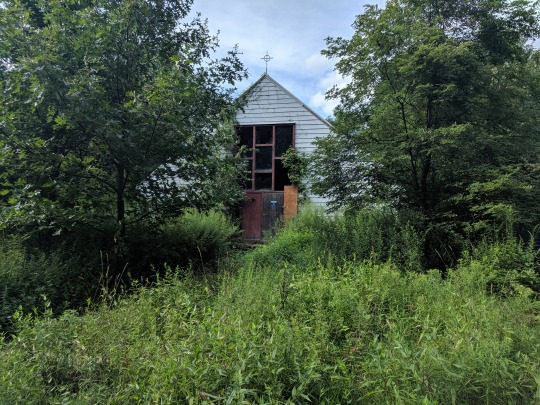
The grounds near the chapel are part of the Hyde Park Trails which you can access from the parking lot at Norrie Point. The Chapel seems to appear out of the thick growth of leaves and plants like a Myan Temple rising from the jungle. It's kind of eerie in a way, and you would never know that the land around it was once a bustling camp.

3 notes
·
View notes
Text
The Holbrooks of Hyde Park
Have you ever wondered who lived on the Roosevelt property before FDR and his family did? As it turns out, quite a few people called that parcel home before we started calling it “The Home of FDR.” Today, we will look at a lovely couple who built the house that started it all, Ephraim and Nancy Holbrook.

The land was originally part of the tract known as the “Great Nine Partners Patent of 1697″ and remained mostly forest up until the turn of the 19th century. Ephraim Holbrook, a respected merchant from New York City, purchased the property in 1826-1827 and began building a square, two-story house (now combined into the rest of the FDR Home). Ephraim was born in Albany in 1788 and he served in the firm of Disbrow, Gillespie, and Parish beginning in 1814. By 1815, he married Nancy Sanford. He and his partner Henry Parish took over the firm by 1819 and they became known as Parish, Holbrook & Co with an office at 60 Franklin Street in New York City. Their work as merchants must have been quite productive because they both retired in 1825, Ephraim was 37 years old! (Man! I wish I could retire in 3 years!!!!)
At that point, Ephraim and his wife moved to Hyde Park where they began building their home. It was said to have been a beautiful farm that “was the admiration of all who saw it” (New York Tribune Obituary 1852). Ephraim and Nancy had a happy life at Hyde Park but never had children. They did, however, adopt Nancy’s niece Harriet Peirson Cook at some point after the death of her mother in 1836. And had at least one other adopted daughter named Laura Sanford Holbrook. The United States Census of 1840 shows them living in Hyde Park with a few servants including two young female “free colored persons.”
The Holbrooks were a part of the parish of St. James Church. They held a wedding there for their adopted daughter Laura in 1835 to George W. Lee. Ephraim was asked to serve as a Lay delegate for the Convention of the Episcopal Church in 1830 and again in 1836. He apparently took his duties very seriously later on becoming friends with the now-famous Rev. Dr. Stephen Tyng, both men had strong feelings about early Christian education and bible study. He even left $2000 to the New York Protestant Episcopal Sunday School Union Society and thousands of dollars to other Episcopal organizations in his will.
In 1843, the Holbrooks left Hyde Park. They decided to move back to New York City and sold their property, which by now totaled 405 acres and a farmhouse, to James Boorman who gave it to his daughter and son-in-law Mr. and Mrs. Josiah Wheeler. The portraits of Ephraim and Nancy, hanging in the main entry hall of the Dutchess County Historical Society, were painted around the time they sold their estate. They were a gift to the society from David Adams, we do not know who the artist was but they are quite good.

Ephraim died in March of 1852 in his home in New York City. The New York Tribune wrote a loving obituary for him proclaiming him “one of our most estimable citizens.” They also claimed that he brought his Hyde Park gardening interests with him back to the city and had one of the finest gardens in all of New York City. Just a few days before his death, he had been walking with his friend Rev. Tyng and said that he “never felt better.” He was 64 years old.
His wife Nancy went on to live another 23 years, much to the dismay of all of the institutions that wanted their lofty share of Ephraim’s estate. His will had over $80,000 intended for various charities and they did not wish to wait until Nancy’s death. This resulted in the now-famous court case of Betts vs. Betts. Nancy won and got to spend her money as she saw fit.
1 note
·
View note
Text
The Myers Bakery
Across the street from what we now know as Cranberries, is a building that once baked the breads and treats that were enjoyed by Hyde Parkers of all backgrounds. This bakery appears to have been in business at least since the 1860s (it can be seen on the early Hyde Park maps as “Bakery”). What became known as the E. Myers Park Bakery was operated by Ellsworth Myers who was born in Milan NY in 1866. He and his first wife Ruth worked the Bakery along with other members of the family. His wife died in 1916 and he remarried later to a woman named Ella Lord. On most of the census records, he lists his occupation as either Baker or Grocer.
These images are from the Dutchess County Historical Society and in them, we get to see the family proudly showcasing their work. Below we see from Left to right, Mary Young (Freer) sales clerk for the bakery, Ned the dog, Eva Myers (Lawerence) the daughter of Ellsworth, Ruth, Ellsworth, George Green nephew of Ellsworth, and Harry Vosburgh. These photos date from 1898.

This building is still standing and just next door you can see the tiny house which is also still there. That was the home of Charles Piersaull who was the town’s local photographer. Ellsworth died in 1939 and the obituary in the Evening Star mentions him as a long time baker. He and his wife are buried at Union Cemetery.

Apparently, they also sold “Celebration Ice Cream”

In this image, we can see Harry Vosburgh and Ellsworth working hard inside the bakery. Fresh bread can be seen and what looks like bagels in the back right corner. I don’t know about you, but I’m hungry now!
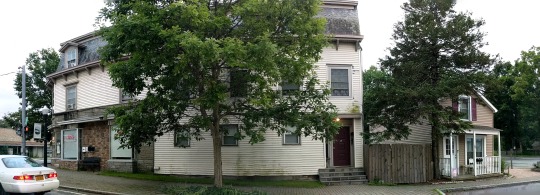
0 notes
Text
Fighting for Freedom
Did you know that Black soldiers made up about 10% of the Union forces towards to end of the Civil War? Did you know that 16 Black soldiers won the Congressional Medal of Honor for their bravery during the war? Did you know that Hyde Park contributed Black soldiers to the efforts to end slavery? Well, it's true and you can even visit their graves.

There are three graves at Union Cemetery belonging to men who served in what was referred to as “Colored Troops Regiments” that began to form in various areas (though unofficially) in 1862. By 1863, several of these regiments were officially mustered into the US Army including the 26th Regiment from New York. This regiment under Col. William Silliman, was organized at Riker's Island, New York harbor, February 27, 1864, to serve three years; it served in the Department of the East until March 1864; in the District of Beaufort, Department of the South, until April, 1865; at Port Royal, S. C., until it was honorably discharged and mustered out, under Col. William B. Guernsey, August 28, 1865.
During its service, the regiment lost by death, killed in action, 21 enlisted men; of wounds received in action, 2 officers, 7 enlisted men; of disease, 2 officers, 102 enlisted men. (Seen below is the Regiment’s flag)

Two men from here in Hyde Park served in this Regiment, Edward Garnett, who lived here in Hyde Park as a laborer until his death until 1877, and William Carl, born in Hyde Park in 1825, who had worked and lived on Abraham Conklin’s farm (which was on the land between what is now Val-kill and Top Cottage). Abraham Atkins enlisted in 1864 and served in the 20th NY USCT. All men came back to Hyde Park and worked mostly as farm laborers, which was a common trade in this area at the time.
0 notes
Text
An honest man: Titus Dutton
While working in the archives of the Dutchess County Historical Society I came across an interesting obituary for a revolutionary war soldier, Titus Dutton. It was so touching and spoke so highly of him. I can only hope that someone would have such nice things to say about me when I go. Titus Dutton was born in Middletown Connecticut in 1747 and served in the Revolutionary War with distinction. His obituary says that he fought “with bravery at the battle of Monmouth” and the very next day he was promoted from Sergeant to Captain “with the most decided approbation of every member of his company.”
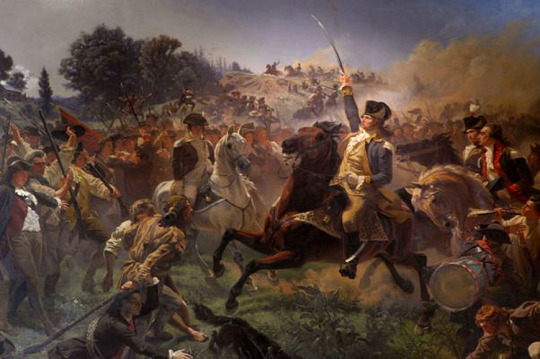
After the war, he married Elizabeth Scott and together they had four children. The Duttons moved to Hyde Park in 1797 and the tax records show that he had a house and farm with real estate valued at $744 in 1799 near Clinton. He served as a Vestryman at St. James Church in 1812 and his youngest son Samuel married Catherine Vanderburgh in the church in October of 1820. Titus was a carpenter and cabinetmaking and it was said that his children and grandchildren continued to use the furniture he made for generations.
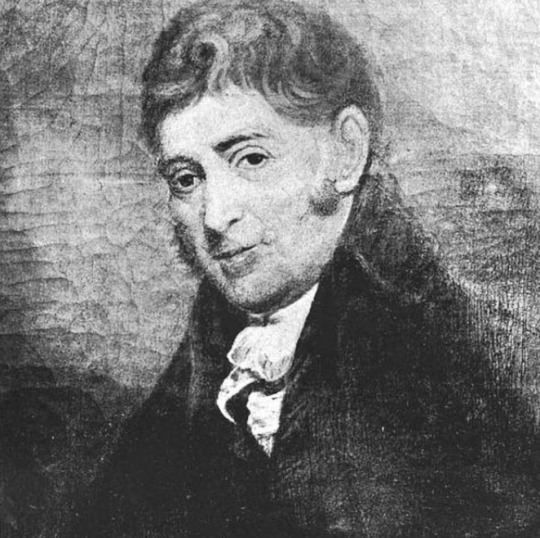
His obituary says “In all his walks and conversation his was most exemplary; and proved by his life and his last protracted illness which he bore with marked patience and submission, the truth of the remark, ‘to live in Christ, to die is gain.’ He died as he had lived, an honest man and an exemplary Christian.” Titus was 85 when he died in April of 1832 and he is buried at St. James church with his wife.
0 notes
Text
The House of Many Faces - Locusts on Hudson

The house that now sits in Staatsburg just west of the Hopeland trails has had at least a couple of facelifts and several different interesting owners. Brockholst Livingston started developing the land along the Hudson and gave the property the name Locusts. There was said to have been a brick mansion on the property in the early portion of the 19th century. It was William Dinsmore who upgraded the house in 1871 to the more stylish Italianate villa style seen above. Dinsmore had done very well and made a fortune working for Alvin Adams and the Norwich Railroad line. He was made a partner and helped form the Adams Express Company which still exists today. At his property on the Hudson, Dinsmore took great pleasure in his gardens and livestock. Both his Jersey cattle and his pigs brought top dollar at market.

Dinsmore’s granddaughter, Helen Huntington, decided that she no longer liked the style of the old family home and in 1941, she demolished the house to make way for a new design. Architect John Churchill designed a 15 room mansion to replace the old one. Many of the original farm buildings were left and still exist today. Helen was married to William Astor though the two spent most of their marriage apart and it was said that Helen preferred to spend time with her female companions even before she divorced Astor in 1941. She enjoyed the company of musicians and artists. Poet Glenway Wescott referred to her as “a grand old lesbian.”


After Helen’s death in 1976, the house would then change hands again, this time to the hands of a man who made a fortune, selling sex. Bob Guccione had been an artist and even attended a Catholic seminary before he got creative with his photography and created Penthouse Magazine in 1965. The magazine started in the UK before coming to America in 1969, right at the height of the sexual revolution. For over 20 years Guccione pushed the envelope on sexual images, which made him one of the country’s wealthiest men in the 1980s. He and his companion, Kathy Keeton (who he married in 1988) purchased Locusts in 1985. Keeton is actually buried on the estate after she passed in 1997.

By the 90s, magazines like Penthouse were no longer sustainable with the popularity of the internet and free pornography. Guccione ultimately defaulted on the estate's $14.5 million mortgage, and the property was sold by a Dutchess County auction house in 2004 to actress Uma Thurman and her boyfriend, hotel owner Andre Balazs. Guccione died in 2010. Andre Balazs, who has purchased and restored several hotels around the country, still owns the house to this day.
3 notes
·
View notes
Text
When Hollywood came to Hyde Park
There have been several movies and TV series produced over the years that focus on the Roosevelt family in some way, shape, or form. Not all of them accurate or even enjoyable (especially if you’re a picky historian like me). There is one movie that stands out for its attention to detail and wonderful acting. Eleanor Roosevelt wrote in her column on June 9th 1960, “I went up to Hyde Park Tuesday morning with Nannine Joseph and Miss Corr, and we arrived at the library to find the filming for Dore Schary's movie, "Sunrise at Campobello," in full swing.” She would stick around long enough to get a photo with Ralph Bellamy, who was playing the role of her husband and Greer Garson, who was playing her! It must have been so odd to sit on the porch of her family’s home surrounded by Hollywood cameras and crew and to know that they were going to recreate her life for all to see on the big screen. (photo below)

Sunrise at Campobello was written as a play by Dore Schary (after he received permission from Eleanor Roosevelt) in 1957. The playwright claimed that he had read everything ever written about the President and focused on details such as how he was able to get around in the days just after contracting polio, the first day he wore leg braces, and the exact dimensions of the kitchen chair that he converted into a wheelchair. The play began in 1958 and ran just over a year on Broadway with Ralph Bellamy playing the role of FDR there first. Eleanor wrote a very detailed review of the play in February of 1958…
“I saw the opening night performance last week in New York of the play, "Sunrise at Campobello", which depicts nearly three years in the life of my husband. I found to be quite true what my son, Elliott, had told me about the play. It is remarkably good and well acted, but I was happy that the actors recognized it as a play and did not try to make it too real. As a result, just as Elliott had said, I was able to see it as drama and not think of it as depicting each individual as he or she really was. Dore Schary, the author, did a remarkable job of gaining an insight into the characters as they were at the time—in 1921. Louis Howe, for instance, who is a delightful and amusing person, could easily have said any of the things that were put into his mouth and I enjoyed the portrayal of him thoroughly, although he could never have looked like the gentleman cast in his role. I thought Miss Mary Fickett did an excellent job of being a very sweet character, which she is in the play. I am afraid I was never really like Mr. Schary's picture of myself, so I could even look upon the portrayal of myself in a fictional light! Ralph Bellamy, as my husband, did a remarkable job of showing, in his study at the Institute for Crippled and Disabled, the way people with polio feel and the patience, hard work and determination that goes into doing each new thing. He suggested my husband very successfully.”
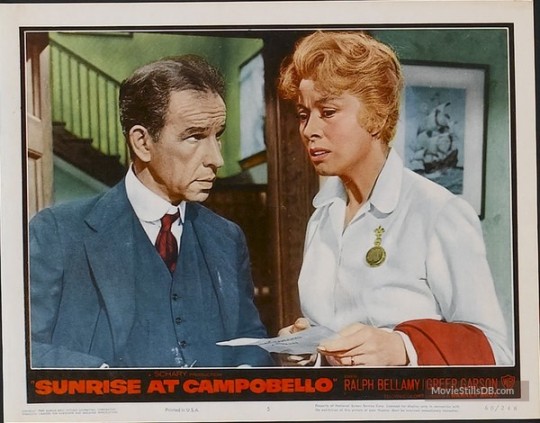
When the plans for a film came after the success of the play, Bellamy was concerned about continuing his role as FDR. He personally believed that he was too old, at age 55, to portray FDR at the ages of 39 through 42 on film and announced that Marlon Brando looked set for the film role. In a Feb 1959 New York Times article, Schary “scotched rumors” that Brando would play the “pre-presidential” FDR. A July 1959 Beverly Hills Citizen article reported that Bellamy was still concerned about playing a younger role that was being filmed in Technicolor close-ups and that Charlton Heston, who was then in his mid-thirties, was being contacted as an alternate for the part. Bellamy would eventually take on the role along side Greer Garson. The movie also starred Hume Cronyn as Louis Howe and Ann Shoemaker as Sara Delano Roosevelt.

According to studio production notes, the democratic convention sequence was staged in the Los Angeles Shrine Auditorium. Production notes show that exterior sequences of the film were shot at actual historical locations including the lawn of Hyde Park and boating scenes in the Bay of Fundy at the Island of Campobello and Bangor Maine. Exact replicas of the interiors of the Campobello summer home, Springwood, and New York City townhouse on 65th Street were recreated on the Warner Bros. set. In the opening credits of the film, the director Dore Schary made sure to thank the Roosevelt family, the Presidential Library and the National Park Service for their assistance. The film was nominated for 4 Academy Awards, and Greer Garson won a Golden Globe for Best Actress.
2 notes
·
View notes
Text
Crumwold Acres - The construction of a little Village

The Rogers family were one of the wealthiest families in Hyde Park at the turn of the 20th century. Based on what Mr. John Golden has told me, they were the best family to work for as well. Archibald Rogers had accumulated over 900 acres of land throughout Hyde Park, the satellite image below gives you a good idea, as that was all his land at one time. By the late 30s the Rogers no longer occupied their grand estate, and by the 1940s, the house and grounds were used by the Military police who were stationed here to protect the President during the war. But it was FDR himself who said in 1941, "I hope that the Rogers place can eventually become an experimental demonstration place for suburban housing, gardening, etc." That idea didn’t come into play until after FDR’s death.
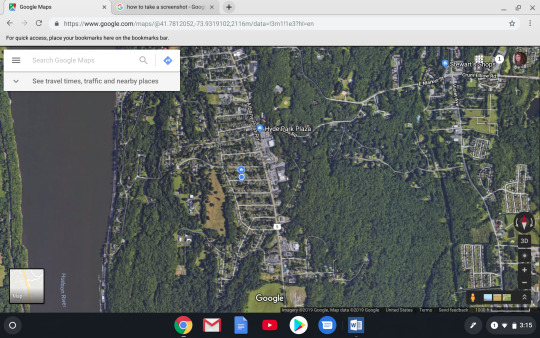
Starting in 1948, Daniel Trotsky purchased the Roger’s mansion for $75,000. He turned it into the Roosevelt School for Jewish Boys. The project didn’t last much more than a couple of years and by 1952, the Eymard seminary took over the main mansion. In 1948, Trotsky sold the 900 acres and about 13 outbuildings to John Watson Golden and his partners for $210,000, and construction on what became known as Crumwold Acres began. The first several houses were built on the south side of Fuller Lane. You can see aerial photo below with the long row of white houses to the left. That was the first completed street. They worked their way south from there.
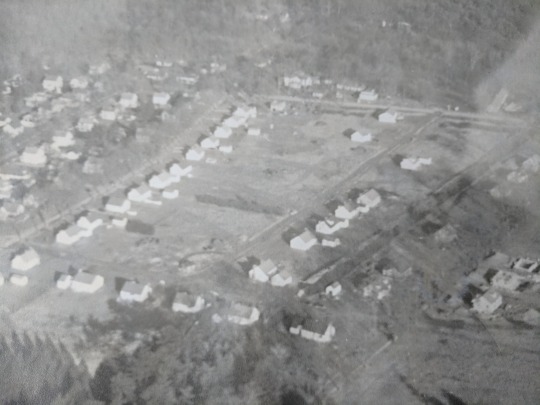
A house could be had from about $6900 to $10,000 in those first few years after the construction began. Golden and his crew set themselves the task of building one house per week to meet demand. There was a waiting list with over 40 families in need of housing by 1949.

(Above are two Central Hudson employees, with John W. Golden and Al Green) With the 1950s came the surge of IBMers in need of homes to commute to work in Poughkeepsie. John Golden explained that these were a new breed of customers for housing. “These were educated people. College grads most of them. Much more educated than the town had been in the past when it was mostly farmers and such. Before the war, very few people went to college, but after that you had some very bright people moving in here.” The housing market boomed and the Golden family would build over 500 houses on the old Rogers estate between 1948 and 1965. This covered the houses from Fuller lane down to Horseshoe Drive and across Terwilliger Road.

“These are well built houses. A lot of people it town said they wouldn’t last but, gee, these houses are going to be 70 years old now aren’t they?” John said, “and it’s a good little community to grow up in.” I have to agree with Mr. Golden. I love my little house (pictured below) and its still holding strong today!
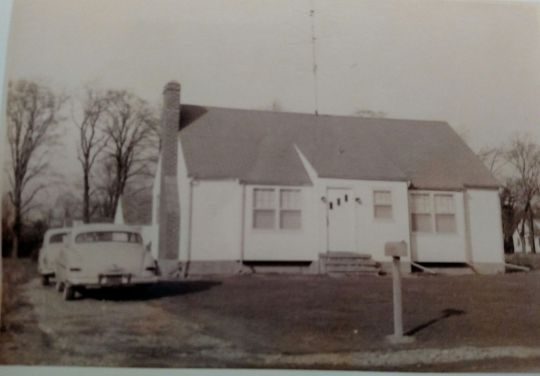
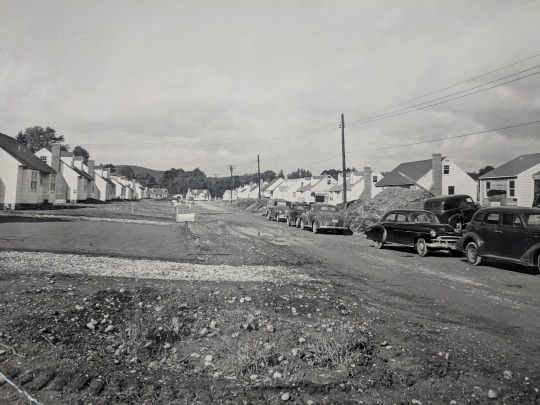
2 notes
·
View notes
Text
Top Cottage - Presidential Getaway

Have you ever longer for a place of your own? A home away from home where you can live the way you want to live and get away from it all? If so, than you have something in common with our 32nd President, Franklin Delano Roosevelt. The man who brought this country through a Great Depression and a war certainly deserved a place that he could call his own. After all, what we as residents of The Hudson River Valley all know to be called The Home of FDR was in reality not his home at all but in fact belonged to his mother Sara for 41 years.
The big house on the Hudson that he had always returned to time and again had by 1933 become a mad house full of journalists, advisors, relatives, and of course his ever present mother. His open-door policy which allowed all sorts of people to come to his mother’s home for discussions ranging from the political to the satirical had backfired on him by the mid 30’s and he had grown tired of what he called “the mob.” FDR had been planning for years to build a small getaway on top of Dutchess Hill which was one of the highest points in the county. He had driven to the top many times with daydreams of what he might create there. His cousin Daisy Suckley, who also had a family home on the Hudson, had taken many rides with him in his Ford Phaeton convertible to the top of what they secretly called “our hill” and together they made plans for a cottage.
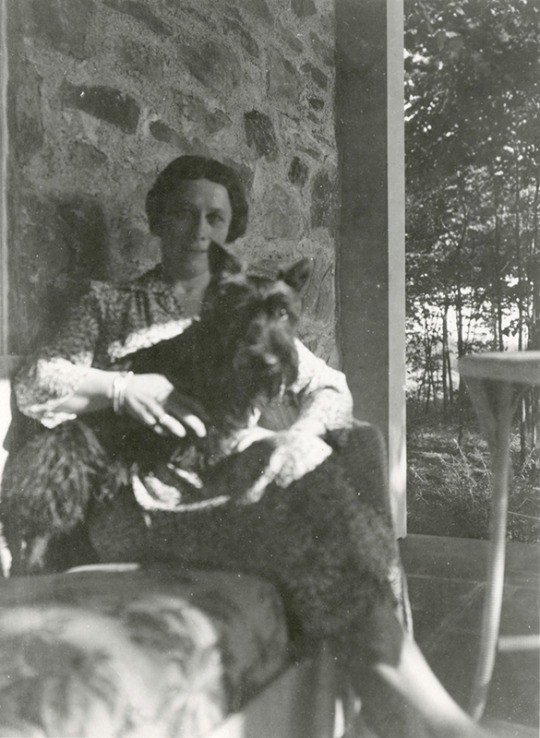
There are only two Presidents who designed and built structures on their estates while serving as President. FDR’s hero Thomas Jefferson had made additions to Monticello and started building Poplar Forest in 1806, and FDR built Top Cottage in 1938. The idea for the cottage was one thing, building it was another. First, the land at the top of the hill did not belong to him, but purchasing land in Hyde Park had never been an issue for FDR and he was able to buy it by 1937 making his family’s holdings well over 1500 acres. Next, came the cost of building which would be rather more than he had expected.
He had planned to build his home for just about $16,000. However it would cost him more than $18,000 which included the contractors, plumbing, plasterwork, furnace, and of course the electric. He tried to save money where he could by using the fieldstone and local materials that were already available on his estate. He also used his own trees as poles for electric lines that ran up the hill from the main road. He used borrowed furniture instead of brand new pieces to fill and make it comfortable. He never had a phone line installed, this might have saved him a few bucks, sure, but he also didn’t want to be disturbed when he was enjoying what we now call “me time.”

The cottage was completed in 1939 and was the first home built by and for a disabled person. Many visitors made their way up the hill with FDR in his sports car including the King and Queen of Great Britain, Prime Minister Winston Churchill, Princess Martha of Norway, Queen Wilhemina and Princess Juliana of the Netherlands. His confidante and cousin Daisy would tag along and listened to him as he “talked mostly about his hopes for future peace,” so would his secretary Missy LeHand. While both women had hopes of sharing the cottage with the President, and Hollywood would like you to think that they did in the Bill Murray film Hyde Park on Hudson, their hopes and a film maker’s fantasy would never come to pass. FDR’s home away from home would never be lived in by him or any of his friends. He died long before he was ready to retire and use the house on a regular basis. When he died in April of 1945, his son Elliott moved in with his wife Faye Emerson. The house was sold by 1952 and it wasn’t until 2001 when it opened to visitors as a National Historic Site.
One must see the cottage to understand how FDR felt about it and how it did give him some kind of peace, be it ever so slight. It is hard to properly express in words how such a lovely little place with intriguing views of the valley could make one feel let alone the President of the United States. But it could be infectious once you journey to the top of the hill and sit on his porch, you may want to go out and follow your dreams of building a home away from home too. You can visit it by shuttle bus from the Henry Wallace Visitor Center in Hyde Park three times a day, May through October. The shuttle bus departs from the visitor center at 11:10, 1:10, and 3:10. Or if you are feeling extra hearty you can hike up the hill from the mile long trail that begins at Val-Kill, Eleanor Roosevelt’s home, and goes up to the top of the hill.

3 notes
·
View notes
Text
Good times on Ice

This cold evening got me to thinking about the once popular sport here in Hyde Park of Ice Yachting. All the old River Families were interested in the exhilarating yet dangerous races that used to take place back when the Hudson used to freeze over entirely. These families came up usually in the warmer weather to enjoy their mansions on the river and spent many hours sailing on their pleasure yachts and sail boats. When the colder weather started, they generally retreated into the city to enjoy the winter season of operas and parties.
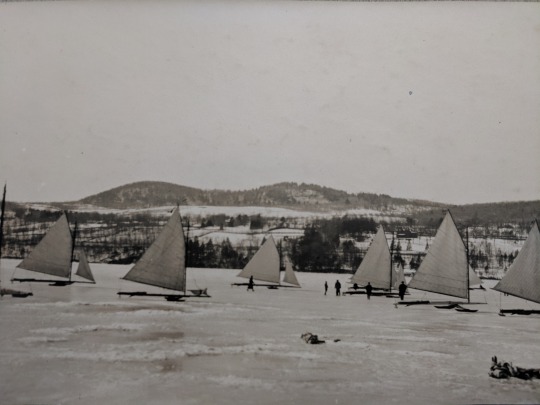
Occasionally, the need would come over many of them to take the train back up to Hyde Park to enjoy a winter weekend in the country. Sleighing, snowshoeing, ice skating, and of course, hitting the river for a good day of sailing. There were no Coast Guard ice cutters back in the 19th century so the river could freeze over enough to take out these large ice yachts that could glide along the ice with giant skates on the bottoms and large sails to catch the wind. On a good breeze, they could reach over 70 miles an hour.
Gatherings of Ice Yachts on the Hudson near the Morgan, Rogers, and Roosevelt estates were quite common. Sometimes the races could get overcrowded as the sport was very popular. They would also race the trains along the edge of the Hudson which was considered quite dangerous. Boats like Ariel and Vixen still exist today and some of these old boats that once belonged to the river families are still raced today. One of the Roosevelt Ice boats will be on display in the Wallace Center this coming week. Make sure to stop by and talk to the wonderful members of the Hudson River Ice Yacht Club who are always willing to share the love of this old sport.
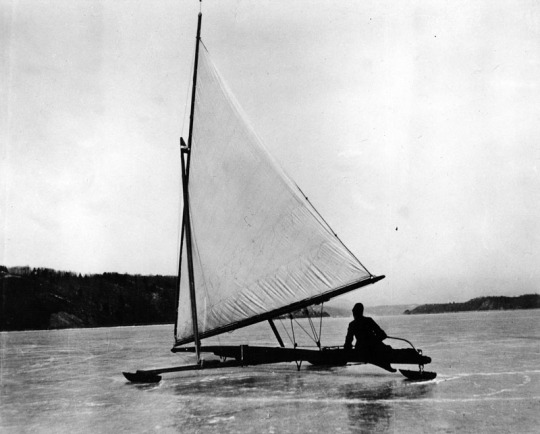
Photos from FDR Library and Museum and from The National Park Service Museum Collections
1 note
·
View note
Text
Christmas for Servants

Many of the Christmas stories from the Roosevelt home have been told by the people who worked for them. Its interesting to hear some of the details about life behind the scenes on a Christmas day from folks like Josephine Plog (pictured above with William Plog) who with her husband, worked for the Roosevelt family for over 40 years. Mrs. Plog said that between 1900 and 1915 (before the new wings of the Roosevelt home were added) she and her husband had lived in a room on the top floor of the Roosevelt home and worked in the small kitchen in the north wing in the first floor. In early December, Sara Delano Roosevelt would pack up the family and head for the city. While they were away, Sara would let the Plogs’ use her “Snuggery” as a living room. Right about the time of Christmas eve, the family would come back up to spend the weekend in the home.
Mrs. Plog said that there was always a party for the servants and their families right around 5 o’clock in the living area of the house hosted by Sara. Everyone would gather around the Christmas tree which was usually harvested from the Roosevelt family’s tree farm. Gifts and checks were handed out to the servants and there was punch and cake. Willis Draiss was the son of a Roosevelt farmer and remember very clearly his experience at the Servant party.
“I do remember going to at least two Christmas parties at the big house. One of my trips, my father wanted to kill me. Eleanor Roosevelt had been on a trip to Belgium, Holland, France. She brought some dolls back with her. One of my sisters went through and she handed her a doll from Belgium. My next sister went through and she handed her a doll from Holland. I came through, she handed me a French sailor doll. Well, I was so embarrassed and so upset that she would hand me, a boy, a doll; that I just took that doll and threw it from one end of the big room to the other. I saw my father looking at me. He was very proud to work for the Roosevelts. My father had a way about him, that when he gave you that look, you knew you better look out. Thank god Franklin Delano Roosevelt saved me. He sat in his chair, and he said “Eleanor, the boy is right. You don’t give a boy a doll.” So my gosh, I got a toy lawnmower and I got the doll too.”
You can listen to that story here http://www.soundandstory.org/directory/114840/134043/
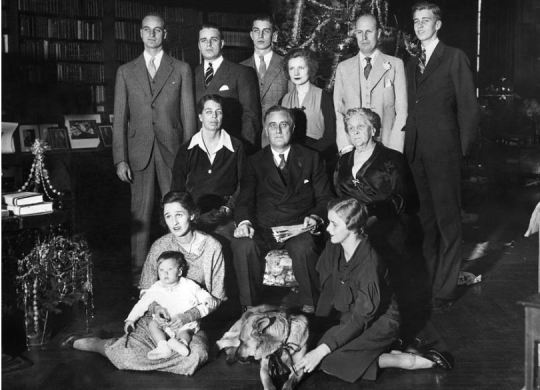
(Above, Roosevelt family inside Springwood, Christmas Day, 1932)
Mrs. Plog confirmed that after the party was over, the Roosevelt family had there Christmas dinner promptly at 7. Not long after the New Year, depending on the weather, the Roosevelt family made their way back down to the city to enjoy the winter season. The Plog family eventually moved into the gardener’s cottage now known as the Gingerbread house today.
1 note
·
View note
Text
Franksgiving

Our Neighbor and Chief, Franklin Delano Roosevelt managed to annoy most Americans by changing up one of our most favorite and fattening holidays. In 1939 he decided to change the date of Thanksgiving to the third Thursday of November instead of the 4th. The President had hoped that this would help improve sales and boost revenue in the final years of the Great Depression. In fact, it just confused most people and angered others. Some states decided to ignore the idea all together. The idea only lasted through 1941.
Part of the problem was that, like this year (2018) November ended up with 5 Thursdays. Since back then stores did not begin to put Christmas merchandise out until after Thanksgiving (imagine that!), many sales professionals believed that having Thanksgiving so late would hurt sales. So FDR decided to change things up and move the holiday. Sadly the plan was made a bit late, August of 1939. Many plans were ruined including most of the final college Football games for the season! So, 23 states decided to go along with the President and moved the date, 22 said no, and kept the original, and 3 states, Colorado, Mississippi, and Texas decided to have two Thanksgivings!!
“Two years ago, or three years ago, I discovered I was particularly fond of turkey! So we started two Thanksgivings. I don’t know how many we ought to have next year. I’m open to suggestion.” - FDR
0 notes
Text
Let the truth be the prejudice

If you walk through the graveyard at the Crum Elbow Meeting House you will stumble upon some very old graves. But on the other side there is a new section of graves that are mostly modern, and one name stands out, or at least it should if you love photography. The gravestone has the name W. Eugene Smith along with the word, Photojournalist. At the bottom of the stone is a quote, “Let the truth be the prejudice” and during Smith’s career that spanned over 40 years, more truth could be found in his photographs than most journalists could put into words. (above, Smith in his studio in NYC 1956)
Smith was born in Wichita, Kansas in 1918 and started photography as a teenager in school. He was hit with depression at an early age when his father committed suicide just before Smith’s graduation from High School. He moved to New York City when he was 20 to begin his career in photojournalism. He worked for Newsweek before moving onto Life Magazine. During World War II, Smith put himself in harms way to get the best images of the front lines in the Pacific. He was seriously injured during the Battle of Okinawa in 1945. (below, photo of that explosion)

In the late 40’s and through the 50’s Smith photographed doctors, students, jazz musicians, and all forms of life in what became known as photo essays. Images that hit you with all sorts of emotions, as Smith said himself, "I’ve never made any picture, good or bad, without paying for it in emotional turmoil." (below, Nun Waiting for Survivors, Andrea Doria, 1956)

Perhaps some of his most emotional images are from his effort to document the poisoning of the water supply from a factory in Minamata, Japan in 1971. One of the most powerful images shows a mother bathing her child who was deformed because of the mercury poisoning. The owners of the factory attacked Smith in the hopes of stopping him from finishing his work. (below)

Exploding mortars and corporate gangsters couldn’t kill Smith. Instead, his self-defeating quest for perfection fueled by alcohol and amphetamines managed to finish him at the age of 59 in 1978. During his life he had various wives and partners but his first wife Carmen Smith Wood was a graduate of Dutchess County Community College, where you will find several of Smith’s photographs. If a picture says 1000 words, then surely W. Eugene’s photos are some of history’s most precious documents. (below, Dr. Ernest Ceriani, the subject of a 1948 Life magazine story titled "Country Doctor," pauses after performing a cesarean, both the mother and baby died.)

1 note
·
View note
Text
Preserving the Past: Crum Elbow Meeting House
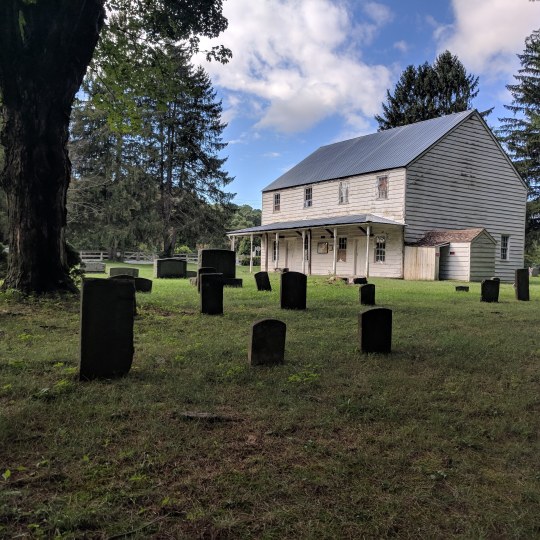
When FDR served as the town historian of Hyde Park he took great interest in the various forms of architecture around the area. One of these important buildings stands out as a major part of our town’s history yet somehow it receives little attention. Yet to FDR, he felt it was important enough to include in the historic mural at the town’s post office. The Crum Elbow Meeting House can be seen above the P.O. boxes in the main room, and it can still be seen today on North Quaker Lane, hardly changed, yet desperately needing love and attention.
The earliest established religious group in Hyde Park was the Society of Friends, also known as the Quakers. Formed in the mid-17th century, the Quakers have a central belief that rejected formal ministry and embraced the “inner light” or Christ’s direct working of the soul. In many services, or meetings as they were generally called, there would be complete silence until someone felt moved by the spirit within them to speak God’s word. For Quakers, both men and women could feel the spirit and be moved to preach, there was no concern over gender when it came to worship. Quakers are famous for their refusal to participate in war, their efforts to abolish slavery and their work in prison reform. In the early days they dressed plainly and never consumed any alcohol.
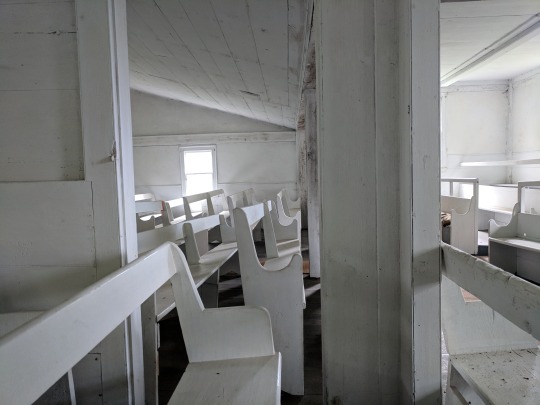
The Crum Elbow Meeting House was built around 1798, though some sources show it as being built much earlier. The first meetings of this particular group of Quakers were held in homes around the vicinity of Crum Elbow creek, hence the name. Members got together and raised over $2000 for the construction of a 34 by 24-foot wooden clapboard structure with a loosely-stacked fieldstone foundation. Construction was completed by one of the friends, John Briggs and over the next decade as the group continued to grow, Briggs was asked in 1810 to add an addition to the building. This east wing addition made the building into more of a rectangular shape which was the standard for most meeting houses in the Quaker architectural style. There are two interior spaces with matching upper galleries that are accessible via staircases. There are no interior decorations or colors that would allow distraction and possible interference with the inner light, just simple white benches and walls.

In the 1882 copy of The History of Dutchess County New York, it mentions the slow decline of the Quakers of the Crum Elbow meeting house due to the temptations of the modern-day life.
“This society like all others of that faith is fast dwindling away, much to the regret of all lovers of honesty, meekness, and sobriety. While their life principles are admired and highly respected, their quaint garb and expressions are not agreeable to the taste of the people of today.”
Slowly the group had more members in the surrounding cemetery than they did in their meetings and by 1913, the meeting house was transferred from the Quakers to an organization charged with the care of that cemetery. The Crum Elbow Rural Cemetery Association still oversees the site today.

FDR was aware of the importance of the Crum Elbow Meeting House and recent historians have likewise shown concern. In 1989 the building was listed on the National Register of Historic Places, and today the friends of Crum Elbow Meeting House are endeavoring to restore the building for future use. This past year, an assessment of the current conditions revealed that over $180,000 of needed restoration would have to be done to ensure the future of this historic site. There are endless possibilities for the future use of this historic and evocative building, but it needs your help. You can contact Denise Byrnes, one of the devoted members of the Crum Elbow Meeting House Preservation Committee at [email protected] and please like them on Facebook for future updates, https://www.facebook.com/Crum-Elbow-Rural-Cemetery-Association-Meeting-House-Preservation-129677364378809/
1 note
·
View note